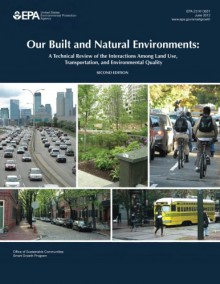Our Built and Natural Environments: A Technical Review of the Interactions Among Land Use, Transportation, and Environmental Quality
Decisions about how and where we build our communities have significant impacts on the natural environment and on human health. Cities, regions, states, and the private sector need information about the environmental effects of their land use and transportation decisions to mitigate...
show more
Decisions about how and where we build our communities have significant impacts on the natural environment and on human health. Cities, regions, states, and the private sector need information about the environmental effects of their land use and transportation decisions to mitigate growth-related environmental impacts and to improve community quality of life and human health. This report: Discusses the status of and trends in land use, development, and transportation and their environmental implications; Articulates the current understanding of the relationship between the built environment and the quality of air, water, land resources, habitat, and human health; Provides evidence that certain kinds of land use and transportation strategies can reduce the environmental and human health impacts of development. Recognition is increasing that land use and transportation decisions can either support or interfere with environmental protection and quality of life. Policymakers have realized that decisions about how and where we build our communities have significant impacts on the natural environment. Cities, regions, states, and the private sector are planning and implementing smart growth strategies and other measures to mitigate growth-related environmental impacts and to improve community quality of life and human health. This edition of “Our Built and Natural Environments” updates the original 2001 publication with the most current information available as of October 2012. It is written for everyone interested in how land use practices, transportation infrastructure, and building siting and design directly and indirectly affect environmental quality. This report provides information that can help state and local governments decide how to accommodate expected population growth within their borders in the most environmentally responsible manner. Different parts of the country face different challenges and opportunities based on the availability of fresh water, the mix of fossil fuel and renewable energy sources, and their vulnerability to natural disasters, among other issues.
show less
Format: Paperback
ISBN:
9781507685006 (1507685009)
ASIN: 1507685009
Publish date: 2015-01-23
Publisher: CreateSpace
Pages no: 146
Edition language: English

